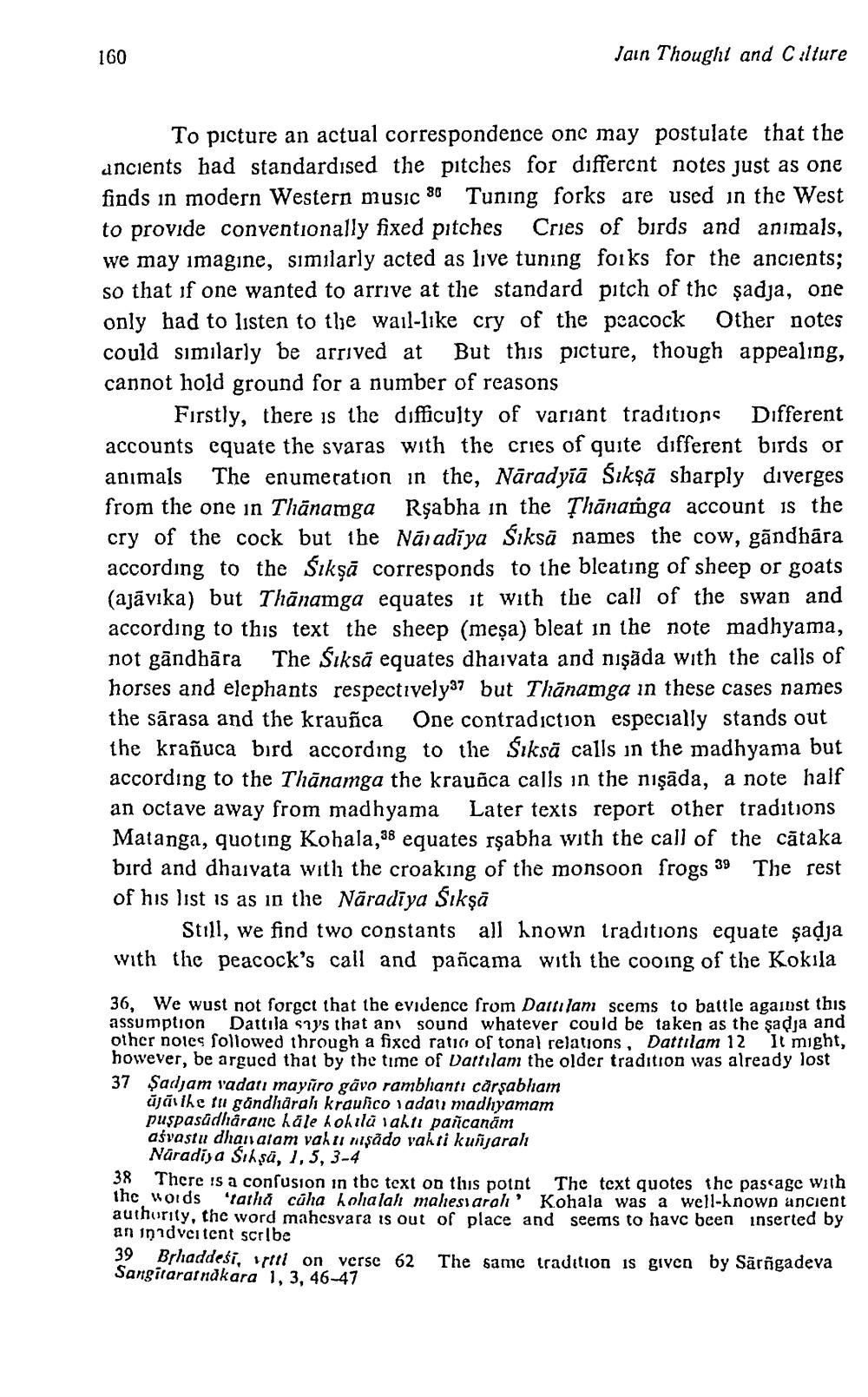________________
160
Jain Thought and Célture
To picture an actual correspondence onc may postulate that the ancients had standardised the pitches for different notes just as one finds in modern Western music 86 Tuning forks are used in the West to provide conventionally fixed pitches Cries of birds and animals, we may imagine, similarly acted as live tuning forks for the ancients; so that if one wanted to arrive at the standard pitch of the sadja, one only had to listen to the wail-like cry of the peacock Other notes could similarly be arrived at But this picture, though appealing, cannot hold ground for a number of reasons
Firstly, there is the difficulty of variant traditions Different accounts equate the svaras with the cries of quite different birds or animals The enumeration in the, Nāradyia Śikṣā sharply diverges from the one in Thānamga Rşabha in the Thānamga account is the cry of the cock but the Nāvadīya Sıksā names the cow, gāndhāra according to the Śıkşă corresponds to the bleating of sheep or goats (ajāvika) but Thānamga equates it with the call of the swan and according to this text the sheep (meșa) bleat in the note madhyama, not gāndhāra The Siksā equates dhaivata and nışāda with the calls of horses and elephants respectively37 but Thānamga in these cases names the sārasa and the krauñca One contradiction especially stands out the krañuca bird according to the Siksă calls in the madhyama but according to the Thānamga the krauoca calls in the nışāda, a note half an octave away from madhyama Later texts report other traditions Matanga, quoting Kohala,38 equates rşabha with the call of the cãtaka bird and dhaivata with the croaking of the monsoon frogs 39 The rest of his list is as in the Nāradiya Sikşa
Still, we find two constants all known traditions equate şadja with the peacock's call and pañcama with the cooing of the Kokila
36, We wust not forget that the evidence from Damlam scems to battle agaiost this assumption Dattila says that any Sound whatever could be taken as the sadja and other noies followed through a fixed ratio of tonal relations, Dattilam 12 It might, however, be argued that by the time of Darnlam the older tradition was already lost 37 Şadjam vadati mayiro gāvo rambhantı carşabham
ājāvie ful gandhidrah krausco adat madhyamam puspasädhäranc hale hokilů iahtı pañcanām aśvastu dhani atam vahu nişādo vakti kuijaralı
Náradiya Sıhşā, 1, 5, 3-4 38 There is a confusion in the text on this point The text quotes the passage with the words tathă cũha kohalah mahesi arah' Kohala was a well-known ancient authority, the word mahesvara is out of place and seems to have been inserted by an inadvertent scribe 39 Brhaddeši, vrtti on verse 62 The same tradition is given by Sārngadeva Sangitarat nakara 1, 3, 46-47




